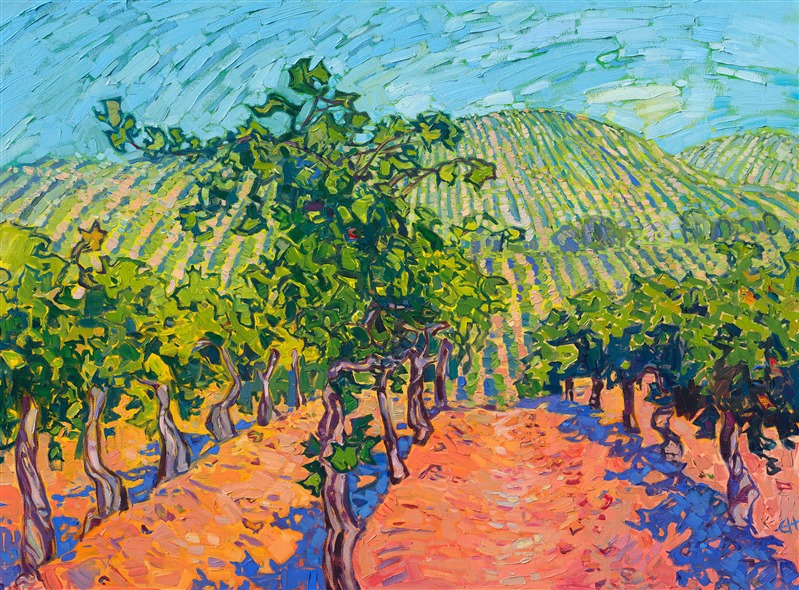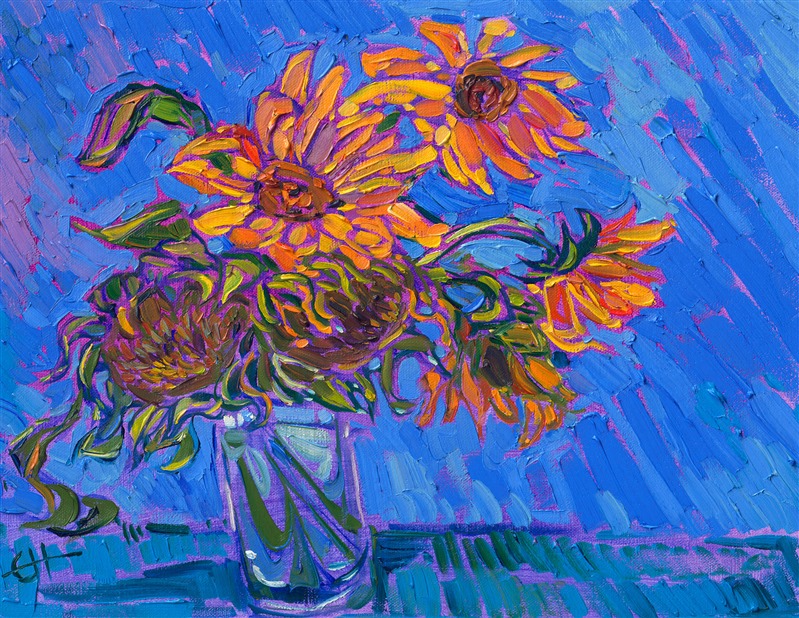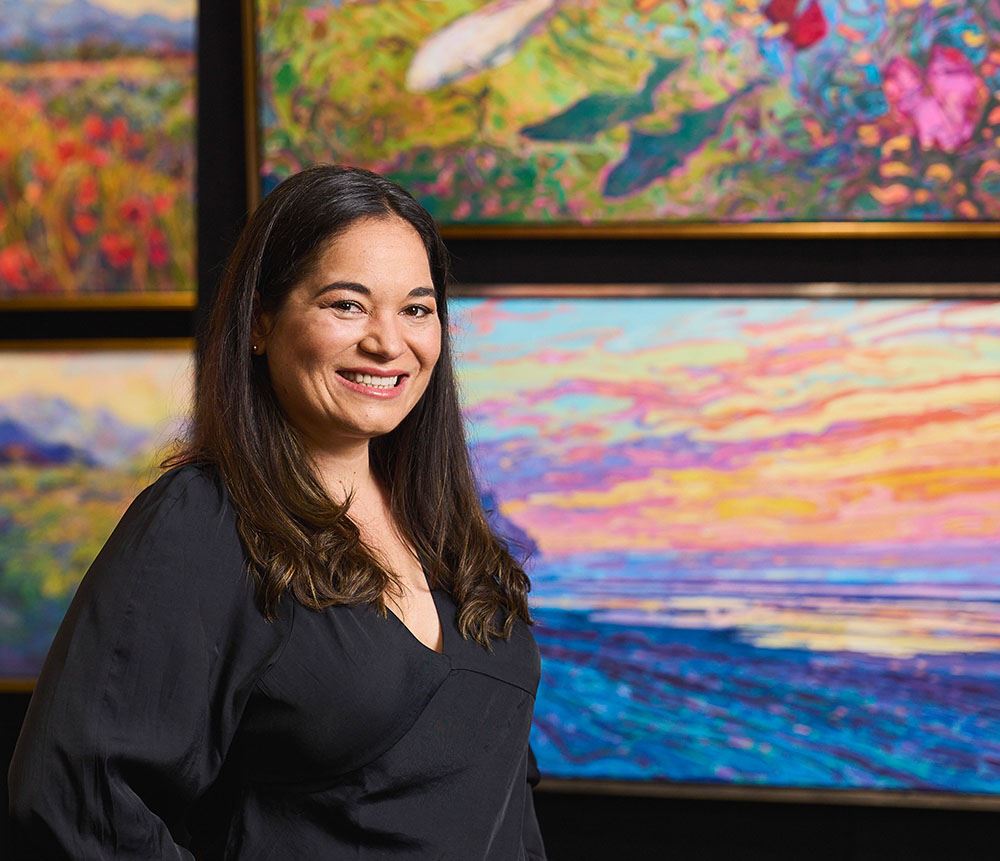
Code NEWYEAR applied for 20% off!

Subtotal
$0
U.S. Shipping
FREE
Saved for Later
Shopping Cart

Code NEWYEAR applied for 20% off!

Subtotal
$0
U.S. Shipping
FREE
Saved for Later
Did you know that most art galleries and artists are open to considering offers on their original works? This fact will likely surprise many art enthusiasts because, of course, the artist has poured their heart and soul into their artwork -- and it's difficult to ask someone for a discount who has put so much of themselves into their work.
If you have fallen in love with a piece of art, but it's a bit out of your budget, galleries are often interested in finding a way to help you obtain the work. The Erin Hanson Gallery offers art financing through Art Money and Affirm, and they have been offering successful layaways for fifteen years. Making an offer is another way to put your cards on the table and can lead to a win/win arrangement.
Art collecting is often an emotionally fueled adventure.
You can and should be seeking out art that has an emotional impact on you, regardless of the artist's prestige or price point. Buying art for the sake of bragging rights is like marrying someone because they were popular in high school. A true emotional connection will stand the test of time.

Adelaida Vines by Erin Hanson
Best Practices for Making an Offer
Most art galleries and artists will be open to offers on their available paintings. Most artists and galleries have a 10% "wiggle room" below the asking price, which can be a significant price saving if the work is priced in the thousands or tens of thousands of dollars. Most galleries and artists have an idea of what they will accept, and some will be willing to sell you a piece at a little more than 10% off, while others may only be willing to accept 10% off or less.
You could wait to make your offer until the end of the fiscal year, when most galleries and artists are eager to find homes for their current inventory, so they can bring in new works with the New Year. Some artists and galleries may even be willing to take offers as low as 40% below retail during these times. The Erin Hanson Gallery has an annual "Holiday Extravaganza" during the month of December, when the motto is, "No reasonable offer will be refused." The artist Erin Hanson says she would "rather have my paintings being loved and cherished in someone's home over the holidays than hanging on a cold gallery wall."
You will never know if you don't ask.
When making an offer, we recommend a) being polite and b) sharing what excites you about the piece. Showing your passion for the artwork will make the gallerist or artist more interested in getting it into your hands. The artist wants their work to go to someone who will love it and understand it. If that's you, we hope you'll tell us all about what the work inspires within you.
If you have previously purchased art from the gallery or artist, that may be another point in your favor. Most collectors want to buy more than one artwork over time, and if that is you, a gallerist or artist may be willing to honor the previous rate you were charged for a past piece.
The main takeaway here is to ask politely, share your passion, and be sure to mention if you've previously purchased artwork from this gallery or artist.

Borrego in Abstract by Erin Hanson
Ten Tips for Getting to a "Yes!"
1. Set a budget.
Before you begin negotiations, it's vital to understand what you can afford. Everyone's maximum is different, so determining your budget before entering negotiations will help you get what you want out of the interaction. This includes ensuring that any spouse or partner is on board if they are involved in the art decisions.
If or when an offer is accepted you will typically have a timeframe to fully settle the payment. Typically a gallery will place a piece on hold for you while discussions are in progress. It is worth requesting that they do so if you are dead set on the piece. Please do note that a gallery will sometimes require a good faith deposit to place an item on hold. Once an agreement is come to on price a gallerist or artists staff will likely want to accept payment immediately or within 24 - 48 hours.
2. Communicate clearly.
Once you have a budget set, it's vital to share your hard maximum budget with the gallerist or artist you are negotiating with. You may need to be willing to negotiate a bit if you are starting out with an offer of over 10% off. Often larger pieces of artwork offer the galleries or artist a bit more wiggle room.
3. Additional fees and costs to consider.
Do be sure to consider that shipping costs, taxes, customs fees, and the like are not typically included within the offer unless explicitly stated. Large pieces of artwork cost several thousand dollars to properly transport.
4. Be polite and professional.
If you are unsure that you can stay polite and calm when your emotions are stirred, asking a friend or another professional to be your intermediary and take care of negotiations for you may be helpful.
5. Share your passion.
The passion we refer to above is one reason gallerists and artists want to share artwork with you! Be sure to share your excitement for a particular piece of art.
6. Don't expect to get a "yes" on your first offer.
If you have ever negotiated for anything, you likely know that the first offer rarely gets a "yes." This is the case with cars, artwork, and anything else for which one negotiates. So, don't be discouraged by a "no" when negotiating a discount. Instead, continue the conversation. You can ask:
There are many options for keeping the conversation going and getting to a "yes."
7. Understand that artists and galleries generally want and even may expect you to negotiate.
It's a little-known fact that negotiation is a standard practice in serious art collecting. Even if you are new to art collecting, you can begin using these tips for negotiating to buy work from your favorite artists.
8. Know that most galleries want you to purchase the art -- so they will work with you to find a way for you to buy a piece.
Galleries want people to purchase art. That is why they are in business. So, if you are serious about buying art, they will likely offer you options for purchasing a piece. If you cannot agree upon a lower price, you may be able to take advantage of the other art-buying options listed below.
9. Demonstrate that you are a serious buyer.
We previously noted that if you are a repeat buyer of a particular artist or at a specific gallery, they may be inclined to give you a discount or grandfather you into an old price bracket. But what if you are working with this gallery for the first time?
One way to assure the gallery that you are serious about this purchase is to provide references, proof of funds, or letters of recommendation to demonstrate credibility. Sharing this information can help close a negotiation that may have stalled -- or it may simply give the gallerist confidence that working with you will be worth the time invested.
10. Focus on building your relationship with the gallery or artist.
Focus on building a relationship with a gallery or artist as part of your negotiation. Developing a strong connection can not only advantage you in your current negotiation, but it may also give you access to insider information, exclusive or first access to artwork, early notifications about upcoming discounts, and other potential negotiation advantages.
11. Don't be afraid to explore other options.
Finally, it is important to recognize that negotiations may not always lead to a favorable outcome. If the terms or price are unsatisfactory, you can always explore other options. You might take advantage of some of the other buying options listed below, or you may be able to build a relationship that gives you early access to new pieces that fall within your budget.

October Vines by Erin Hanson
Other Buying Options
Buying high-end art can be taxing on the old wallet and is out of budget for many people. Fortunately, there are options for buying original artwork. Here are three options that you may be able to use if a negotiated price still falls out of your current budget:
1. Buy a smaller piece, an artist's sketch, or even the palette from which your favorite painting was painted.
Erin Hanson paints small paintings called "Petites" throughout the year - but they are most available at her annual exhibition Erin Hanson: The Petite Collection. Collecting smaller works can be the perfect jumping-off point to establish a relationship with a "new to you" artist or if you are a budding art collector.
If this does not fit your budget, it's always worth asking if an artist's sketch or even a palette is available for purchase. Both items are beautiful, collectible, and are occasionally available.

Blooms on Blue II by Erin Hanson
2. Utilize layaway to pay over a few months.
Some galleries (like The Erin Hanson Gallery) offer a layaway option. This is when a collector provides a down payment and works out a plan to pay for the painting. The plan is usually expected only to last a few months. The gallery then holds the piece for them, and when the payments are completed, the work is shipped to the collector.
3. Use an art financing option like Art Money.
There are many art financing options, such as Art Money or Affirm. This operates sort of like a credit card, but for art only. So, the collector has to go through the credit approval process, get approved, pay a deposit amount, and then pay the financing company in monthly installments until the piece is paid off. Art Money offers "10 payments, 10 months, 0 interest."
The advantage to using art financing is that you can get your painting hanging on your wall sooner. There will be a short waiting period while the deposit goes through and the financing is finalized, but once that is done, the collector can take home the piece right away.
While financing is a great option, many galleries do not welcome price negotiations on top of financing. The company doing the financing is getting a percentage of the total price paid, which means that the gallery is already discounting the work.
Whether you utilized one of the above three options or want to try your hand at negotiating, we welcome a frank discussion about Erin Hanson's artwork anytime. Feel free to examine her available paintings and call us at (503) 334-3670 with any questions, including those about price.
Discover the artist at the forefront of modern impressionism.

About Erin
ERIN HANSON has been painting in oils since she was 8 years old. As a teenager, she apprenticed at a mural studio where she worked on 40-foot-long paintings while selling art commissions on the side. After being told it was too hard to make a living as an artist, she got her degree in Bioengineering from UC Berkeley. Afterward, Erin became a rock climber at Red Rock Canyon, Nevada. Inspired by the colorful scenery she was climbing, she decided to return to her love of painting and create one new painting every week.
She has stuck to that decision, becoming one of the most prolific artists in history, with over 3,000 oil paintings sold to eager collectors. Erin Hanson’s style is known as "Open Impressionism" and is taught in art schools worldwide. With millions of followers, Hanson has become an iconic, driving force in the rebirth of impressionism, inspiring thousands of other artists to pick up the brush.